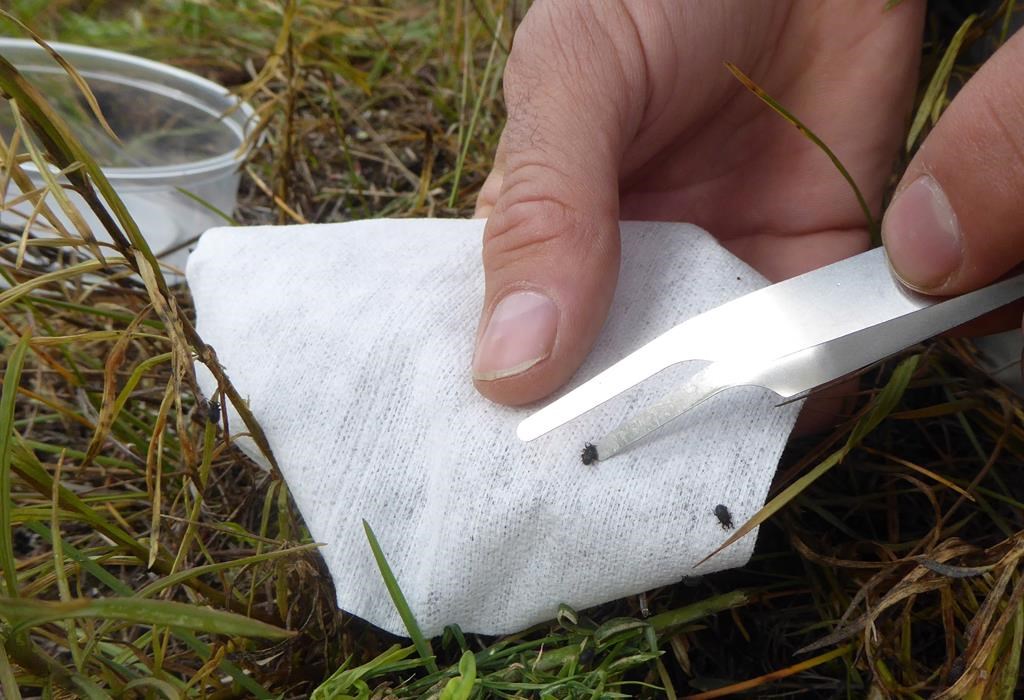Hundreds of tiny beetles have been released in Banff National Park to try to fight a weed.

Known as weevils, they are being used as a biological control agent to kill the Yellow Toadflax, an invasive species that’s taken root throughout the national park.
“A weevil is a very small insect that lays its eggs within the plant and reduces the plant’s distribution by stressing it out,” said Jane Park, a fire and vegetation specialist with Parks Canada.
A total of 350 weevils — each one the size of a grain of rice — were released last week into a small test site at an undisclosed location.
Park said it’s the first time they’ve used a biological control agent in Banff National Park to prevent the weeds from overtaking native plants.
READ MORE: Conservationist calls for a cap on visitors to Banff National Park
Officials went through an environmental assessment and got help from Rosemarie De Clerck-Floate, a scientist with Agriculture and Agri-Food Canada in Lethbridge, Alta., before the weevils were released in the park.

Get daily National news
“They are little weevils that come from Serbia,” De Clerck-Floate said.
“They’ve co-evolved with their host plant, which happens to be this invasive weed that came from that area of the world.
“It’s a long process getting them over here.”

De Clerck-Floate said the weevils are regulated by both the Canadian Food Inspection Agency and the United States Food and Drug Administration.
She said she first received approval to use the weevils as a bio-control agent in 2014.
READ MORE: Goats graze, till McHugh Bluff in Calgary as part of naturalization project
“I immediately started releasing them in different climatic areas in Alberta and British Columbia, both northern and southern,” she said. “They establish pretty well everywhere, which is really good, and they overwinter.”
De Clerck-Floate said their release in Banff National Park is her highest elevation at 1,400 metres above sea level.
“I have a feeling they’ll do OK,” she said.
She said the weevils will only feed on the Yellow Toadflax, hijacking its growth, and leave native plants alone.
“It helps prevent the spread of the weed,” said De Clerck-Floate. “It takes a lot of patience. It’s not like chemical control, where you can see the effects overnight.
“Sometimes it takes many years before you see a big effect, but the fact is in many of these cases you can’t be blanket spraying herbicides.”
Park said the pilot project will be monitored in the coming years and, if it works, could become a bigger part of Parks Canada’s vegetation management program. The park already uses a combination of mowing or hand-pulling weeds, as well as a short list of approved herbicides.
READ MORE: Bad behaviour in Canadian national parks revealed
“This is new to Banff, which is the use of bio-control,” she said. “It’s new to us, but it’s not new to Western Canada or North America.”
- As Canadian families spend at the holidays, seniors offer perspective on what matters most
- Police say no charges pending after man killed in 2023 Calgary trench collapse
- Cold warnings across the Prairies forecast wind-chill temperatures near -45 C
- WestJet pauses installing non-reclining seats after blowback — for now







Comments